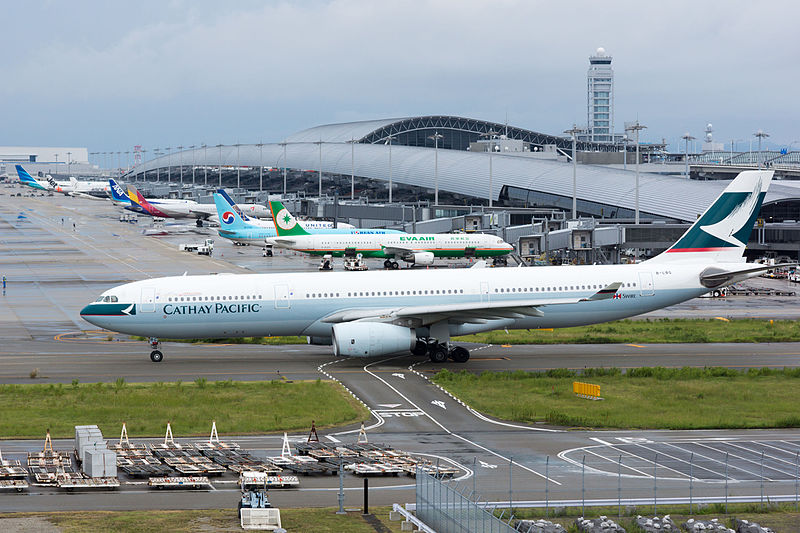Airlines
Iberia boosts its flight offer in Latin America and United states

Iberia will consolidate its post-pandemic recovery in the summer of 2023, focusing on its long-haul markets: Latin America and the United States.
For the airline industry, the summer season begins on March 25th and runs until October 28th, six months in which Iberia’s main focus will be on Latin America. Following the recovery of its entire network of destinations, the airline has programmed capacity increases in its most strategic markets in this region, as well as deploying marketing campaigns and other communication, public relations and sponsorship actions to increase its brand awareness in the 16 Latin American countries where it flies.
This Is The Most Punctual Airline In The Europe(Opens in a new browser tab)
In the summer season, Iberia will recover its full range of pre-pandemic flights and even increase its operations by 2% compared to 2019 levels, which will be 5% for the year as a whole. Specifically, it will offer around 280 weekly flights to 18 destinations in 16 Latin American countries:
Bogotá: it has grown from 10 to 14 frequencies; from June, it will operate 18 frequencies and the company’s aim is to offer 21 frequencies – three daily flights – from November.
Buenos Aires: Consolidation of two daily flights to Argentina’s capital.
Lima: Iberia goes from seven to 10 frequencies from June until the end of the year, with the intention of reaching two daily flights.
Montevideo: From January, Iberia offers up to seven weekly frequencies, which will be maintained for most of the year.
Rio de Janeiro: Continuation of the operation with three weekly frequencies, in addition to another seven with Sao Paulo.
Boeing 737 MAX makes first passenger flight in China since March 2019(Opens in a new browser tab)
In Central America, the increase to a daily flight on the Guatemala-El Salvador route, which took place in December, was consolidated, as was the increase to a daily flight on the San José route in Costa Rica. Panama will have between five and seven weekly frequencies throughout the summer, and daily flights from November onwards.
In the Caribbean, Havana will have five frequencies from September, Santo Domingo will consolidate its pre-pandemic operation with a daily flight, and Puerto Rico will reach six weekly frequencies in July and August.
In the US, Iberia will recover its summer routes to Washington DC and San Francisco. In addition, from June, it will increase its daily flights to Dallas. In total, it has scheduled nearly 20% more flights to the US than in 2019: up to 124 weekly flights between Spain and eight destinations in the United States. Specifically:
New York: Twice daily flights from March, continuing beyond the summer season until the end of the year.
Miami: Twice-daily flights will be maintained throughout the year.
Chicago: Daily flights from March through December
Boston: Daily flights from April to October
Dallas: Iberia operated this route throughout the winter -it was initially launched as seasonal last June with four weekly frequencies- and from April it will increase to five frequencies, to six in May, and will reach a daily flight from June to October.
Los Angeles: This route will have four frequencies in April, increasing to five from May to October, and Iberia will operate it with its largest aircraft, the Airbus A350s, with a capacity for 359 passengers.
Washington DC: Iberia will operate this route again from April to October with four weekly frequencies.
San Francisco: This seasonal route returns from May to October with three weekly frequencies.

Airlines
An A320 plane flew for 28 minutes with both pilots asleep

In a startling incident, an Airbus A320 operated by an Indonesian airline, Batik Air, flew for a harrowing 28 minutes with both pilots asleep at the controls.
The alarming event unfolded on Batik Air Flight 6723, carrying 153 passengers, en route to Soekarno–Hatta International Airport in Jakarta. The saga began when the first officer allowed the captain to take a nap, only to fatigue himself, attributing his drowsiness to caring for his one-month-old twins. As the pilots dozed off, the aircraft veered off-course, prompting concerns from air traffic control (ATC) who lost contact with the flight 90 minutes into its journey.
Despite the pilots being unresponsive for nearly half an hour, ATC managed to track the aircraft using radar as it covered a staggering 210 nautical miles, equivalent to the distance between New York and Washington, D.C. The captain eventually woke up, realizing the perilous situation and rousing his co-pilot.
After correcting the flight path, the captain attributed the radio silence to a “communication problem,” and the plane eventually touched down safely in Jakarta. However, the incident sparked widespread concern and investigation by Indonesia’s transport ministry.
A preliminary report revealed that the second-in-command had not rested adequately before the flight, shedding light on the potential dangers of pilot fatigue. While the identities of the pilots remained undisclosed, the incident underscored the critical importance of ensuring crew members are well-rested and fit for duty.
Despite the gravity of the situation, the swift actions of the awakened captain averted disaster, emphasizing the necessity for robust safety protocols and measures within the aviation industry.
Airlines
Ex-Cathay Pacific A330-300 Destroyed by Fire during Long-Term Storage at Spain

In a dramatic turn of events, an ex-Cathay Pacific Airbus A330 met a fiery end at Ciudad Real Airport in Spain. The aircraft, with a distinguished service history spanning 28 years, was resting in long-term storage at the airport when disaster struck.
Reports emerged detailing the unfortunate incident, painting a picture of destruction and chaos. The once majestic A330, bearing the serial number MSN113, became engulfed in flames while undergoing dismantling procedures. What began as a routine process turned into a nightmare as a fire erupted in the aircraft’s tail section, quickly spreading to consume the entire fuselage.
Emergency responders, including the Civil Guard, medical teams, and law enforcement personnel, swiftly descended upon the scene to contain the inferno. Despite the intensity of the blaze, their coordinated efforts prevented any injuries among both the public and the brave individuals working to quell the flames.
By mid-afternoon, the Ciudad Real fire service declared victory over the fire, announcing its successful extinguishment. However, the aftermath left behind a trail of questions and concerns. Authorities launched an investigation into the cause of the blaze, with initial findings shrouded in mystery.
The head of the airport expressed astonishment at the unprecedented event, highlighting it as the first instance where airport infrastructure had to grapple with such a significant fire-related challenge. As the investigation unfolds, the aviation community awaits answers, hoping to shed light on the circumstances leading to the demise of the retired Airbus A330.
Airlines
Air India’s last VVIP Boeing 747 now found a new home in USA

In a symbolic transition marking the end of a storied chapter in aviation history, Air India bid farewell to its last remaining Boeing 747-400 jumbo jetliners, once revered for ferrying dignitaries including prime ministers, presidents, and vice presidents.
The sale of these iconic aircraft to AerSale, a company based in the United States, signals the closure of a remarkable era for the airline.
The decision to part ways with the Boeing 747s was driven by practical considerations. Tata Group, the new custodian of airindia flights, deemed these majestic planes uneconomical to operate in today’s aviation landscape. As such, out of the four sold, two will be repurposed into freighters, while the remaining pair will be meticulously disassembled to harness their valuable parts.
The transaction, orchestrated by Mumbai-based Vman Aviation Services, underscores the strategic shift in Air India’s fleet management strategy under its new ownership. Tata Group’s decision to divest from the 747s reflects a commitment to optimizing operational efficiency and aligning with contemporary industry standards.
Skytech-AIC, a UK-based remarketing firm engaged by Tata Group, facilitated the sale of these iconic aircraft, marking the conclusion of their illustrious service with Air India. The airline’s last flight featuring the Boeing 747 took to the skies between Delhi and Mumbai in March 2021, encapsulating decades of distinguished service and indelible memories.
The allure of used aircraft parts continues to resonate across the aviation sector, offering operators a cost-effective alternative without compromising on quality or performance. The transfer of these aircraft to AerSale not only ensures their continued utility but also underscores the enduring legacy of Air India’s fleet.























